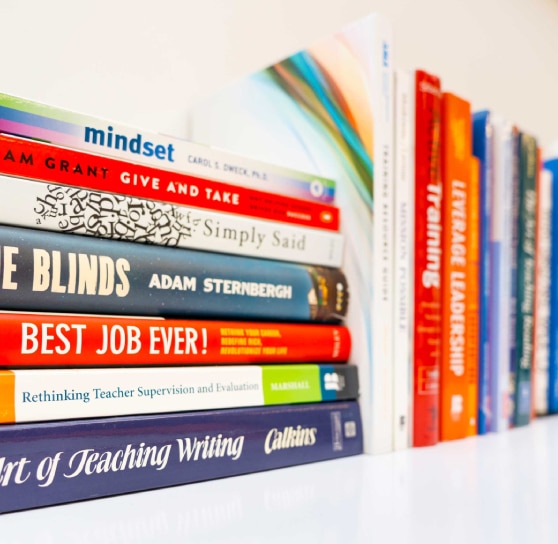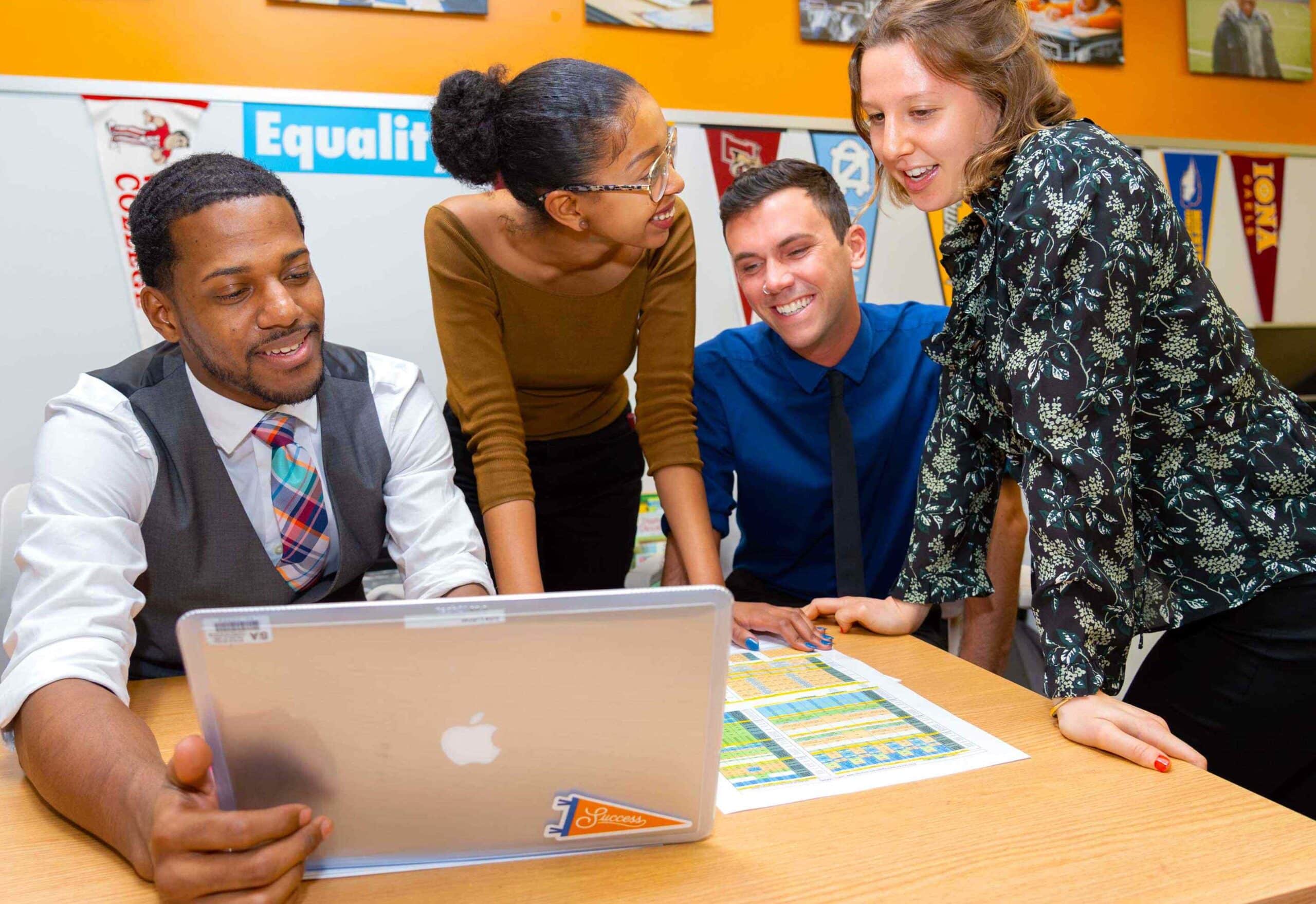


Second grade is a transformational year for scholars as readers. You are the leader of this transformation!
Your 7- and 8-year-olds begin the year reading books like Poppleton—short texts, or texts with short chapters, and relatively simple plots with minimal character change. They quickly move into illustrated chapter books, such as Frog and Toad Are Friends, with more complex characters and multiple episodes related to a single plot. Scholars get hooked on characters, entire worlds, and ongoing storylines. A single book can ignite a spark that changes a scholar’s entire approach to reading and literature—and instill in her an everlasting love of reading!
In this unit, your job is to give scholars the ticket to understanding fiction texts — paying attention to the characters!
If you do your job well, your scholars will understand that characters are the backbone to any story, and that by noticing what characters do and say, they will understand the big idea.
Give scholars constant opportunities to express their ideas about characters! Oral language development, or talking, is of the utmost importance.
Think of this unit as part 1 of scholars’ love affair with characters.
In the early part of second grade, most of your scholars will encounter characters whose feelings may change, but whose traits stay the same. Later on in the year, your scholars will read series books. In these books, characters reappear in book after book, and most characters will develop and change over time.
But for this second unit, scholars need to become familiar with identifying and interpreting characters. It is one of the most powerful reading skills. They must use their knowledge of the characters to derive meaning from the story overall.
The development of this capacity to interpret characters and story meaning should be applied at home and at school. It is imperative that ALL your scholars are reading at home and at school. For students who are not, it is imperative that you meet with parents, and if you cannot succeed in insisting that the work be done at home, then you need to manage up to leadership.
It is your responsibility to ensure that ALL of your scholars are reading 6 days a week at home!
Spend two days on each lesson to give scholars practice.
Lesson 1: Great readers pay attention to the things that characters say, do, and think.
Lesson 2: Great readers pay attention to the main character’s relationships with other characters.
Lesson 3: Great readers pay attention to what characters say, do, and think over time to develop ideas about characters.
Lesson 4: Great readers distinguish between character traits and character feelings.
Lesson 5: Great readers pay attention to the problem and solution, or outcome, to figure out the lesson the main character (or reader) learns.
What Does Success Look Like?
Great readers pay attention to the things that characters say, do, and think. Success is when scholars have mastered identifying the characteristics of the main character.
Lesson 1
Engage — 1 minute
Understanding the main character is key to understanding the story.
Direct Instruction (Model/ Practice) — 5–7 minutes
Independent Reading/ Targeted Teaching Time — 15–20 minutes
Partner Share — 3–5 minutes
Whole-Class Share — 5 minutes
What Does Success Look Like?
Great readers pay attention to the main character’s relationships with other characters.
Success is scholars explaining how the main character’s actions make other characters feel, think, or act.
Lesson 2
Engage — 1 minute
Paying attention to the character’s actions also means paying attention to how he or she interacts with other characters. This helps us get to know the main character like a friend!
Direct Instruction (Model/ Practice) — 5–7 minutes
Independent Reading/ Targeted Teaching Time — 15–20 minutes
Partner Share — 3–5 minutes
Whole-Class Share — 5 minutes
What Does Success Look Like?
Great readers pay attention to what characters say, do, and think over time to develop ideas about characters.
Success is scholars keeping track of a character’s actions and developing ideas about the type of character he or she may be.
Lesson 3
Engage — 1 minute
By paying close attention to our characters across the whole story, we come to know them so well that we begin to anticipate what they might do next.
Direct Instruction (Model/ Practice) — 5–7 minutes
Independent Reading/ Targeted Teaching Time — 15–20 minutes
Partner Share — 3-5 minutes
Whole-Class Share — 5 minutes
What Does Success Look Like?
Great readers distinguish between character traits and character feelings.
Success is scholars understanding that a character’s feelings can change. However, character traits are part of a character’s personality and show what the character is like.
Lesson 4
Engage — 1 minute
By thinking about the character throughout the story, we can notice what the character tends to do, so we can identify his or her traits.
Direct Instruction (Model/ Practice) — 5-7 minutes
Independent Reading/ Targeted Teaching Time — 15-20 minutes
Partner Share — 3-5 minutes
Whole-Class Share — 5 minutes
What Does Success Look Like?
Great readers pay attention to the problem and solution, or outcome, to figure out the lesson the main character (or reader) learns.
Success is scholars describing what the character, or scholar, learned from the character’s problem and resolution.
Lesson 5
Engage — 1 minute
A character’s good and bad moments show or tell the reader something important, like how to be a better person. When we think about the character and how her problem was resolved, we can figure out the lesson.
Direct Instruction (Model/ Practice) — 3-5 minutes
Independent Reading/ Targeted Teaching Time — 15–20 minutes
Partner Share — 7–10 minutes
Whole-Class Share — 5 minutes
Use the next 5 days to work with scholars and increase their capacity to read.
The most important thing you can do is give kids independent reading time. The best way to improve reading is by having kids read.
Listen to scholars as they read independently. Talk with scholars one-on-one about their reading and coach them through the key obstacles to being great readers.
Depending on their needs, work with scholars whole group, in small groups, or one-on-one to support them with the:
Congratulations! You’ve reached the end of Unit 2: Characters are Your Best Friends! As a result of teaching this unit, you, as the teacher, have:
Your scholars can:
Celebrate your scholars’ successes by acknowledging what they can now do as readers as a result of their work over the last several weeks. For example, scholars know that characters are the backbone of a story, and that by paying close attention to the characters, they can understand the characters AND the big ideas in their books.
Invite scholars to share how much fun they had getting to know their characters.
Reflect on your successes and stretches, as well as those of your scholars. Look at your F&P results. Have your scholars grown as readers over the last month? Between now and the next unit, your scholars should move to the next reading level. This is always a tricky jump for scholars, and they can easily get stuck, making little to no growth. Enlist parents to help get scholars over this hump!
Scholars must read at home, as well as in school. Are 100% of your kids reading 6 days a week at home? Make sure at-home reading is happening, and meet with families who are falling short to recommit them to this team effort.
Are 100% of your kids reading fluently? Are they using all of the tools at their disposal to figure out the meaning of what they are reading?
Are 100% of your scholars doing their literacy homework?
Going into the next unit, make specific reading goals for yourself. Set a percentage goal for how many children you will move ahead in the next 15 days. Set a goal for children who are not reading at home. Who will you get to consistently read at home? Set a goal for moving any scholars who are stuck. Why are they stuck? Do they read most or all words correctly? What is their struggle with decoding? Do they understand what they’re reading? Do they understand the big idea? How will you partner with parents to support their growth?
If you are having trouble meeting your goals, do not wait until you have NOT succeeded. Consult your colleagues. Consult your leaders. ASK FOR HELP so you can meet your goals!
resources
Access a wide array of articles, webinars, and more, designed to help you help children reach their potential.

ES PBL Grade 2: Brooklyn Bridge
Educator
Curriculum
Elementary School
2nd
PBL

ES PBL Grade 3: Iroquois and Lenape
Educator
Curriculum
Elementary School
3rd
PBL

Grade 1: PBL School – How It Works!
Educator
Curriculum
Elementary School
1st
PBL

Grade 4: PBL A Nation is Born
Educator
Curriculum
Elementary School
4th
PBL
NEWSLETTER
"*" indicates required fields
